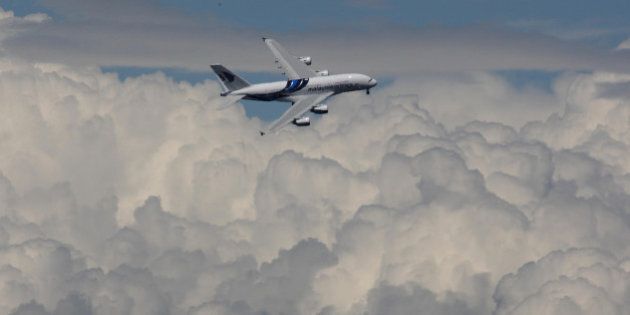
A Canadian pilot's "startlingly simple theory" for why Malaysia Airlines flight MH370 disappeared is being debunked after going viral.
Last week, McGill-educated pilot Chris Goodfellow posted a lengthy theory on Google Plus that purportedly explained what happened to the Boeing 777 that vanished without a trace on March 8.
He said the Malaysian military tracked the plane making a left turn toward the Malay peninsula into the straits of Malacca, which suggested to him that it was heading for an airport on the island of Pulau Langkawi.
In Goodfellow's own words:
"We old pilots were always drilled to always know the closest airport of safe harbour while in cruise. Airports behind us, airports abeam us and airports ahead of us. Always in our head. Always. Because if something happens you don't want to be thinking what are you going to do — you already know what you are going to do."
He wrote that the pilot was a "hero" who was likely responding to a fire on the plane, which would have led crew members to pull all the circuits and breakers until they found the faulty one.
This, he wrote, would explain the loss of transponders and communications.
The Toronto Star reported Goodfellow saying that a fire could have started due to improperly stored lithium ion batteries or poorly inflated tires, but the former theory does not appear in his blog post.
He shot down reports of a hijacking because, he said, the plane would not have made a left turn towards Langkawi.
Goodfellow added that the plane likely crashed en route to the airport, and that looking for it elsewhere is pointless.
His theory went viral with 2,060 shares on Google Plus. Wired re-published it Tuesday with the headline, "A Startlingly Simple Theory About the Missing Malaysia Airlines Jet" and The Atlantic on Monday said the explanation "makes sense."
But it's also being pilloried by at least one outlet that claims Goodfellow didn't take all the facts into account.
Slate's Jeff Wise wrote that while the plane turned towards Langkawi, it also later turned right and headed for a waypoint known as "Vampi," northeast of Indonesia's Aceh province.
It also set a course for a waypoint called "Gival," south of Phuket, Thailand, and was later tracked on a route going over the Andaman Islands, Reuters reported.
"Such vigorous navigating would have been impossible for unconscious men," Wise wrote.
He also pointed out that an electronic ping detected by the Inmarsat Satellite at 8:11 a.m. on March 8 narrowed the plane's location to one of two arcs, one in central Asia, the other in the Indian Ocean.
"As MH370 flew from its original course toward Langkawi, it was headed toward neither. Without human intervention — which would go against Goodfellow’s theory — it simply could not have reached the position we know it attained at 8:11 a.m.," Wise wrote.
Ironically, Wise's own analysis of Goodfellow's theory has gained a life of its own online.
It was shared more than 8,000 times on Facebook and has been re-published by the National Post.
Like this article? Follow our Facebook pageOr follow us on TwitterFollow @HuffPostCanada
Also on HuffPost
